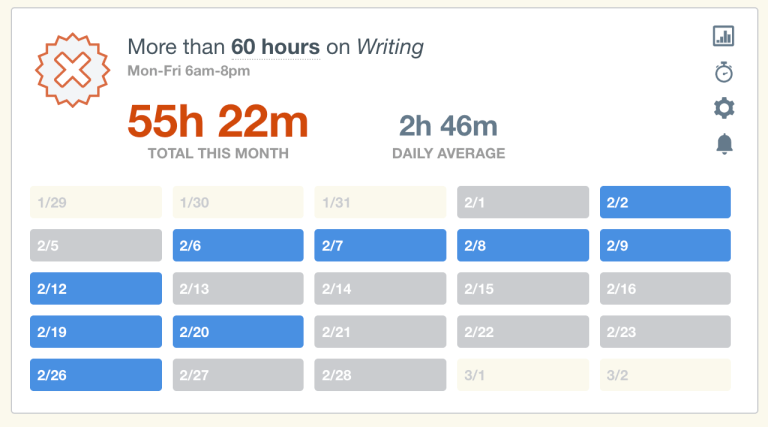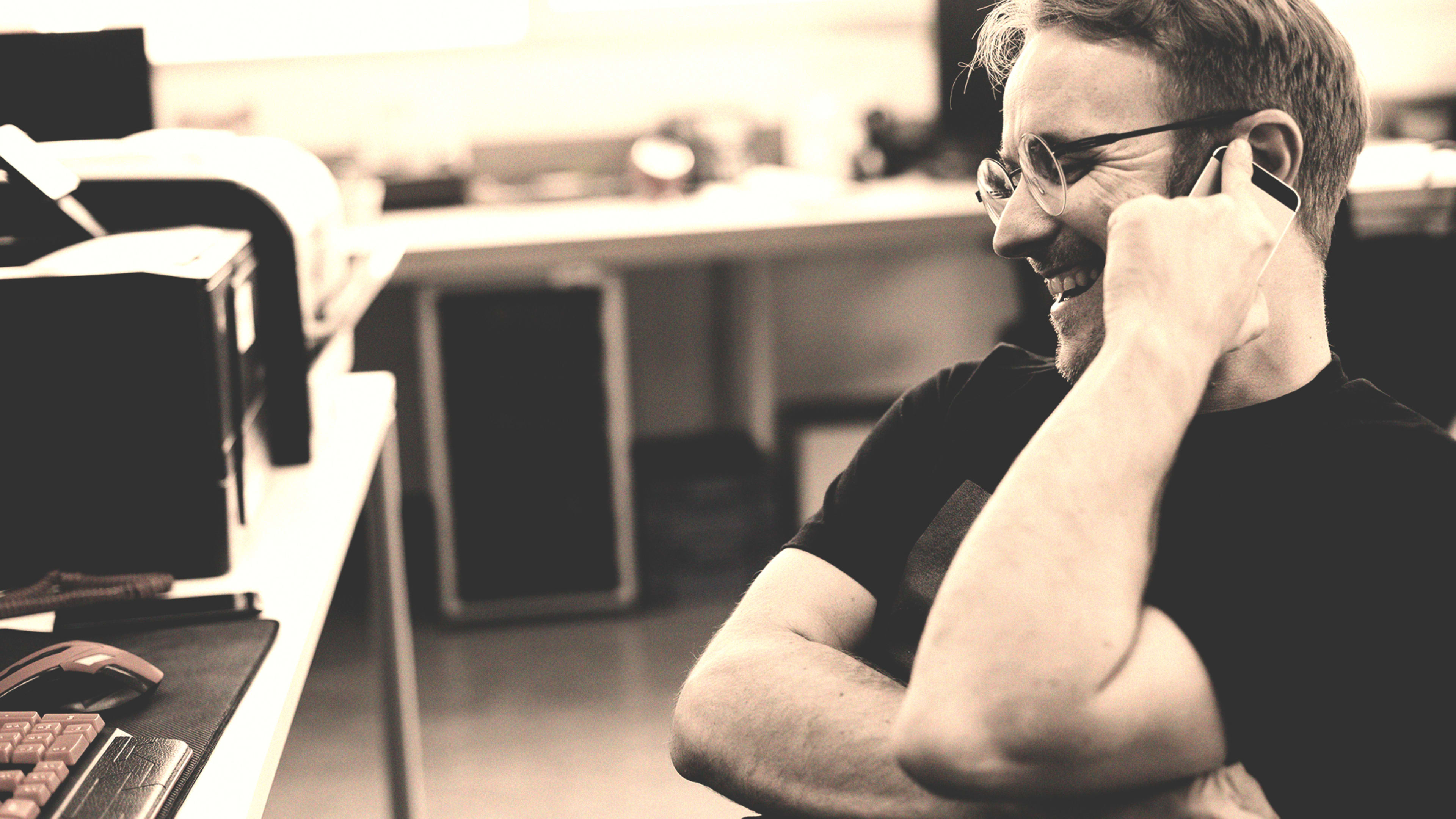As human beings, we’re hardwired to want to reach the finish line. We crave completion. Crossing items off a to-do list and saying we finished and can move onto the next thing.
However, all this obsession with saying we’re “done” can lead to what’s called completion bias–where your brain specifically seeks the hit of dopamine you get from crossing off small tasks, and ignores working on larger, more complex ones.
But not everything is so easily measured. Large (and often more meaningful) projects don’t get crossed off in a day.
To stay committed to the work that matters most, we need to find ways to measure, track, and feel good about the progress we make every single day.
Related: Here’s What I Learned About Myself When I Tracked Every Hour Of My Day
Why We Rarely Recognize Small Wins
When Harvard’s Teresa Amabile looked into the daily habits of hundreds of knowledge workers across industries, she found that out of all the things that can boost our mood and motivation during the workday, “The single most important thing is making progress on meaningful work.”
Just like we love crossing small tasks off our to-do list, being able to see that we’re even one step closer to a big goal is a huge motivator. The problem is that these “small wins” are notoriously hard to measure. And worse, we tend to ignore them.
There’s a reason we’re busier than ever but feel like nothing gets done. When all you see is a huge goal looming in front of you, it’s easy to get depressed and feel defeated. And worse, the modern work environment seems to amplify these feelings for a number of reasons:
- Our days are filled with meaningless busy work. So many of us spend our days in reactive mode–answering emails, chatting on Slack. In the moment, it might feel like you’re doing important work. But only reacting makes it hard to measure any true progress.
- We’ve lost the ability to set meaningful, effective goals. Few of us set effective goals or have a clear idea of how we’ll reach them.
We don’t set in place methods for tracking progress: Without an easy, repeatable system in place to clearly see and track progress, it doesn’t matter how much work you do, you won’t feel any closer to the finish line. - We’ve lost the ability to handle uncertainty. When you can’t measure progress, large projects can quickly become overwhelming. So we’re more likely to default to the smaller, more short-term tasks we understand.
All these add up to a day that craves structure. And the easiest way to find this is just to stick to what’s in front of you.
But to do meaningful work, we need to fight against the feeling of overwhelm that comes from large projects. And that means knowing how to track your progress.
Here are 5 ways to break the cycle of short-term busy work and start properly tracking your progress:
1. Break Out Large Tasks Into Smaller Pieces And Visualize Them
When Jocelyn K. Glei was launching her first podcast, Hurry Slowly, she realized there were too many moving parts to handle at once. She needed to record and edit interviews. Get sponsors and build a website. Research topics. Find music . . .
So, to track her progress toward the ultimate goal of launching her podcast, she broke out each individual task into the smallest possible piece, and then mapped them out in a visual way:
Jocelyn’s doc became a map toward the project’s ultimate goal. And as a nice side effect, it gave her lots of little tasks to cross off each day. Meaning she got the hit of motivation from “completing” a small piece of the project.
Related: What To Do When Common Time Management Tricks Don’t Work
2. Set Daily Quotas And Start Every Day At Zero
There’s a reason you might remember the first step of a big trip and not the 37,568th. Progress gets harder to measure the closer you get to the middle of a project. In that nebulous middle zone, the finish line is still too far away to see. While what seemed so clear at the start all of a sudden becomes fuzzy and uncertain.
To combat this, LaunchDarkly CEO Edith Harbaugh uses a technique she picked up during a 3,360-mile bicycle ride to Glacier National Park:
For both cycling and software development, measurement is vital–observing visible progress is motivating. Feeling like you have 80% of the work ahead makes one’s daily contribution to the goal feel insignificant.
Once your direction is set, begin each day with a blank slate. Starting every day from zero increases team focus, generates a concrete sense of accomplishment and forward motion, and helps prevent complacency.
In your own work, rather than simply looking at your overall progress on a project, set smaller daily quotas.
If your goal is especially complex, a quota can be easier to hit than a goal. For example, if you’re writing a book, you could change your progress from “write a chapter” to “write 1,000 words.”
3. Use Technology To Track Progress On Specific Goals And Projects Actively
One of the hardest parts about tracking progress is actually actively tracking it. Most methods require you to be conscious of what you’re working on, when, and for how long. Yet it’s all too easy for you to forget to keep track and lose the benefits of tracking your progress anyways.
RescueTime works in the background, meaning it automatically tracks the progress you make each day. You can even set daily goals and get an alert when you hit it. For example, I have a RescueTime Goal set for spending three hours every day writing.
Every day, I can see whether or not I’ve hit that goal, or get a hit of motivation when I get my pop-up notification saying I reached it. I can also look back over a longer time frame to see how often I’ve hit that goal and made progress.
Streaks are incredibly powerful psychological tools. The longer we maintain one, the more pressure we feel to keep up with it. By seeing my productivity streak in RescueTime, I’m more motivated to keep going and hit my progress goal for the day.

4. Track Your Metrics On A Calendar
If you prefer to track your progress by hand, you can track it on your calendar.
The idea is simple. Pick a metric (or two) that makes sense for you, and then track how many days you hit it.
For example, this could be writing a certain word count, making a number of sales calls, or fixing a number of bugs. Your calendar becomes a large, visual reminder of your progress (and also brings in the power of streaks).
Related: Three Time Management Hacks For Fighting Boredom At Work
5. Write In A Diary For 5 Minutes A Day
You can also combine the benefits of tracking your progress with daily reflective writing. In fact, this is exactly what the participants in Teresa Amabile’s study did.
At the end of each day, take a few minutes to write about what you worked on. Make sure to note both your “small wins” and any setbacks.
At the end of the month, flip back through your notes and see how far you’ve come. It’s amazing, the clarity you get from seeing the progress you made over a longer period.
To get the most out of this approach, try going analog and use a paper notebook, rather than a word doc or your phone.
Tracking your progress is the easiest way to ward off feeling overwhelmed by large projects. With a system for measuring progress in place, you’ll always know you’re moving in the right direction. No matter how big or complex the project is.
When you give yourself permission to focus on progress, not perfection, you’re putting yourself in a position to be more productive than ever.
A version of this article originally appeared on RescueTime and is adapted with permission.
Recognize your brand’s excellence by applying to this year’s Brands That Matter Awards before the early-rate deadline, May 3.
